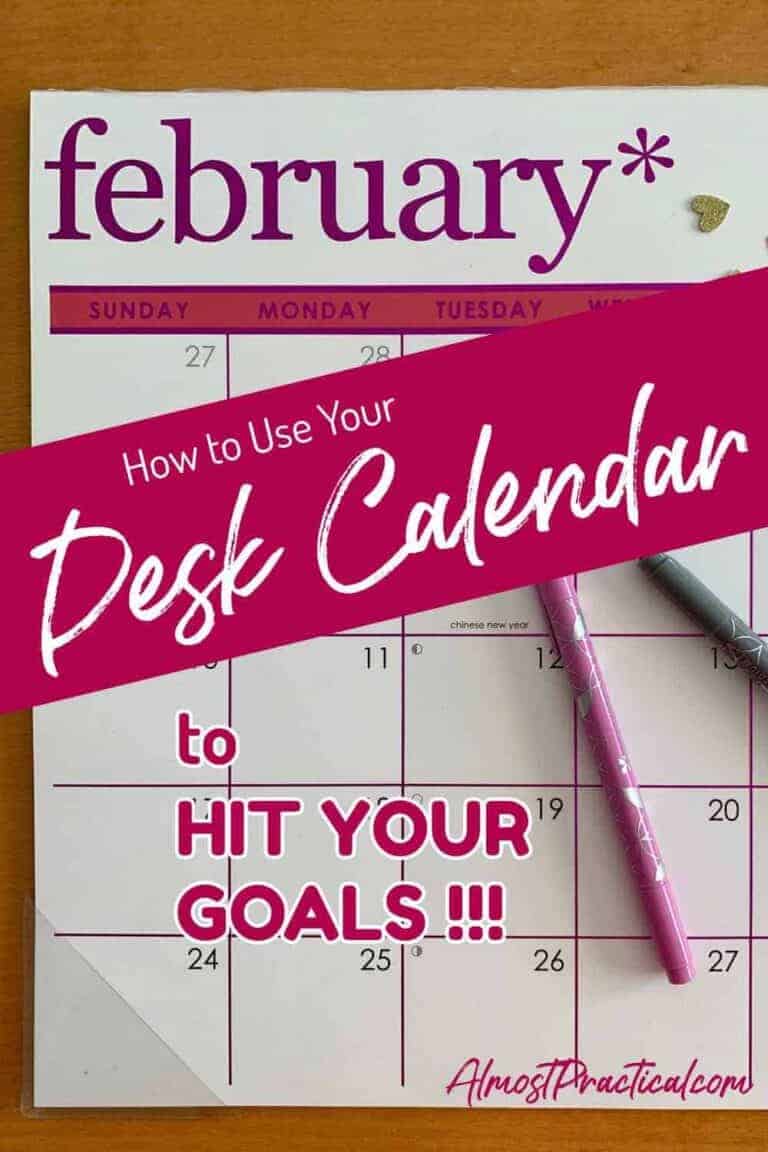Getting Started With List Making
This post may contain affiliate links which means I make a commission if you shop through my links.
Disclosure Policy
Last week I reviewed a book called Listful Thinking by Paula Rizzo. This was sort of a starting point for me to talk about how to launch your organizing process.
You see, I think that list making is the single most important key to getting and staying organized. It is an underrated tool that is free to everyone and easy to use once you get the hang of it.
I know what you are thinking – how is this an epiphany? A list is nothing new.
Well, if you have been making lists and are getting things done, then you are well on your way. But if you have been making lists and are still feeling disorganized then I would say that there is room for improvement because a list is a very powerful tool.
Today I want to talk about some basics to give you ideas for setting up your own list making process.
It is tempting to dive right into a project but taking the time upfront to lay the groundwork is really very important. So, let’s start here and over the next few weeks move into mapping out a project.
My Own Experience With Disorganization
Conceptually, I have always recognized my own need for using a list to keep me on track. But historically my implementation has been horrible.
Whenever I felt overwhelmed, I would make a list and promptly forget all about it.
I would take the time to write it down on paper, in a notebook, a planner, on a sticky note, or even in an app on my iPhone or computer. Sometimes the lists I made were quick and others took a lot of thought and were very detailed.
But inevitably I would get all of those to-do’s out of my head and onto paper – and then maybe it was an “out of sight out of mind” situation but I would not actually USE the list that I took the time to make. Often, I forgot where I wrote it down – so when I wanted to use the list, I couldn’t find it in a pinch.
I would even have trouble with something as simple as a grocery list. Have you ever taken the time to take inventory of your refrigerator or pantry, make meal plans for the week, cross reference these with weekly coupons and create a beautiful grocery list – only to get to the store and realize that you left that amazing list sitting on your kitchen table? I have!
Other times, I would find myself in the thick of a situation or project flying by the seat of my pants. There was no time for planning or making list, I just had to wing it.
It was frustrating and self sabotaging.
Why was I doing this? Why was my every attempt at getting organized backfiring? Why did other people seem so put together while I would struggle with the simplest tasks?
I realized that something had to change. I needed to create systems and habits that I could rely on without overthinking it.
Making a list had always seemed like the logical starting point – but in actuality there were a few wrinkles to iron out before I could even start with list making.
If this resonates with you, I will try to walk you through the process that has ultimately worked for me in this series of posts. Please follow along and feel free to email any questions to me using my contact form or in the comment section of each post. If I have a strategy to help I will try to respond via a new post or in an upcoming newsletter.
How to Use Lists Effectively
To prepare for what I am going to share in my next few posts, here are some considerations that I want you to mull over.
First, to use a list effectively – you need to designate a single place for your lists to live. This place has to be easy for you to access at any time. It can be a paper notebook if you are committed to carrying it around with you or an app on your phone or computer.
Second, you have to commit to your choice of location. If you pick a notebook, use that one single notebook. If you pick an app, use that ONE app. Do not waffle back and forth between multiple apps for your lists. Remember that you are more likely to stick with a habit if you enjoy it – so pick an app or notebook that you like to use.
I tried many apps before settling on one that is both visually appealing to me and works with the way I think.
Third, create a habit of checking your lists on a daily basis. You cannot set and forget. Lists are meant to be used, massaged, changed, updated and referred to often.
And finally, as with anything when it comes to organization – show yourself grace. You will forget things and things don’t always go according to plan.
The important thing is to stay the course. Keep working on self improvement and take the baby steps.

Summary
Before you can dive into effective list making, you need to lay a strong foundation for your lists. It is essential to choose a singular place to house all your lists and not waver from this. You also need make it a habit to refer to your lists often so you can stay on track.
In my next post I will talk more about choosing an ideal place for your lists that works with the way that you think.
If you have any questions thus far, please leave them in the comments below.








